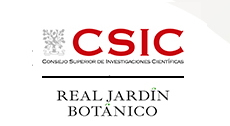Scientific Area
Micro-morphology and palynology of major Indian Polygonaceae: identity and interrelationship
ID: 613 / 344
Category: Abstract
Track: Pending
Proposed Symposium Title: Micro-morphology and palynology of major Indian Polygonaceae: identity and interrelationship
Authors:
Monoranjan Chowdhury1
Payel Paul2
Affiliations: 1 Professor, Plant Taxonomy and Biosystematics Lab. Department of Botany, University of North Bengal, Darjeeling, 734013, WB, India. mchowdhury@nbu.ac.in 2 Assistant Professor, North Bengal St. Xavier’s College, Rajganj, 735134, Jalpaiguri, WB, India. payelbot@nbu.ac.in
Abstract:
The family Polygonaceae comprises a group of flowering plants integrated in the order Polygonales in the Magnoliophyta of the kingdom Plantae and is prevalent in temperate regions of the world. They have an extensive array of distribution in India stretching from the coastal plains to the subtropical, temperate to sub alpine regions of Himalaya. Present study aims to study 34 taxa of seven genera, Antigonon Endl., Bistorta Adans., Fagopyrum Mill., Fallopia Adans., Persicaria Mill., Polygonum L., Rheum L. and Rumex L. of Indian origin. Accurate species level identification and to understand their interrelationship comprehensive qualitative and quantitative investigation of Leaf architecture, stomata, trichomes and detailed pollen morphology using both light microscope (LM) and scanning electron microscope (SEM). The variable epidermal cells, six different stomatal patterns, among the trichomes variation especially peltate, capitate spheroidal and stellate types of glandular trichomes were observed. Pollen morphological attributes including aperture number, pollen shape, size in polar and equatorial view, colpi length, exine thickness have been observed. Based on aperture type and exine sculpturing pattern in SEM, 3 main pollen types and 12 subtypes have been identified. Pollen grains were recorded monad, isopolar and radiosymmetric type. Pantoporate, tricolpate, tricolporate aperture type and exine ornamentation appears to be valuable and unique characters were found useful tool for the delimitation and differentiation of closely related taxa. The studied characters under LM and SEM were further statistically analyzed through ANOVA, PCA, Pearson Correlation Matrix to understand the interrelationship among the taxa. The analyzed characteristics attributes have systematic value, as they are constant at specific and generic level therefore much helpful in species level identification and understanding of their interrelationship.




